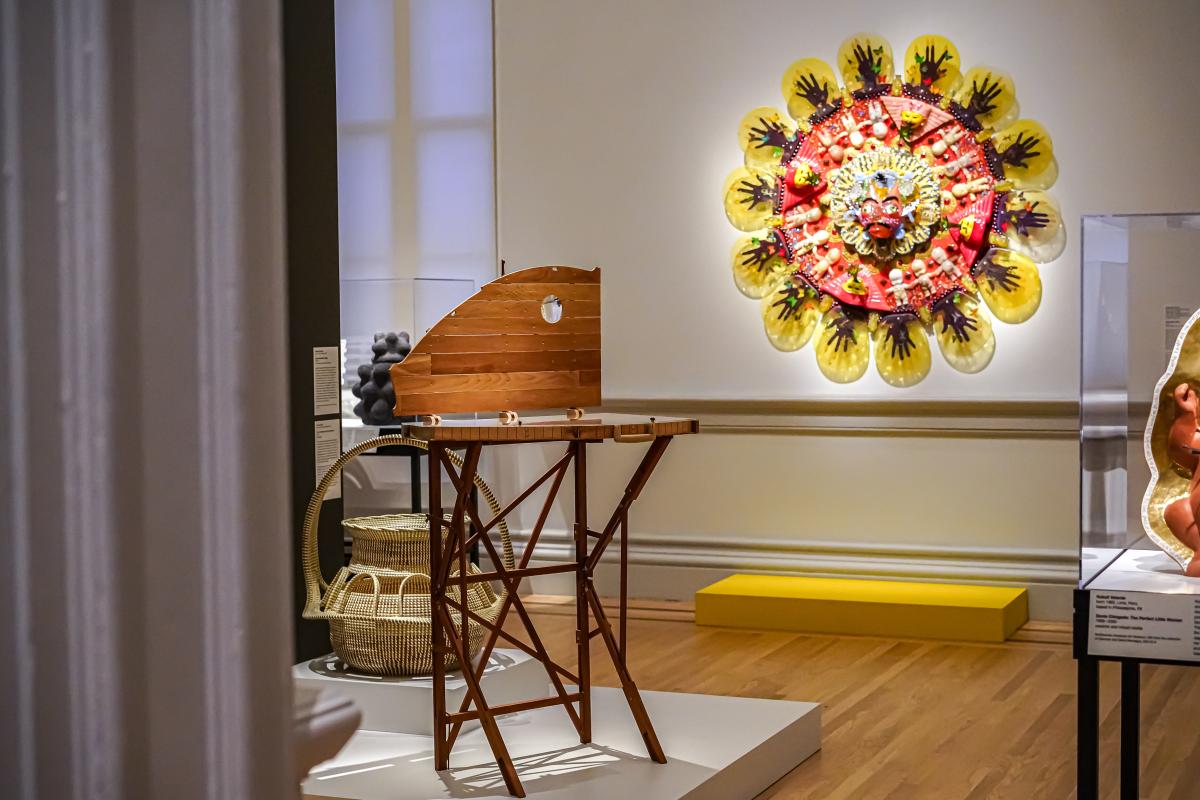Einar and Jamex de la Torre are brothers and collaborators, whose artwork includes blown glass sculptures, mixed media, and installation art. Originally from Mexico, they moved to the U.S. as children and currently live and work on both sides of the border.
The de la Torre brothers' artworks are humorous, additive, and multifaceted in a style that they describe as “multi-layered baroque.” They made this wall sculpture, Ohio Goyza y Más, after an Aztec calendar, a visual dating system adapted by many ancient Mesoamerican nations. The title translates to “Ohio Enjoy and More,” and, when pronounced, sounds like “Good Morning” in Japanese. It represents their humor, where the piece was made (Ohio), and their multifaceted view of people and time.
For this sculpture, the brothers gather countless motifs into a celebration of blended cultures: Kewpie dolls, with surprising objects in their bellies, invented in the early twentieth century by American Rose O’Neill and popularized in Japan; Mano poderosa (the all-powerful hand) from Mexican Catholic devotional imagery; sonrientes (grinning figures) from Mesoamerican ceramics; and golden tumis, ceremonial knives with semicircular blades, from the ancient Andean Moche culture. Casts of butterflies and insects symbolize transformation and migration. “We’re using found objects. Don’t love that term,” Einar told an audience while speaking at the Smithsonian American Art Museum. “We usually spend a lot of time looking for the right objects and we have a library of a bunch of material culture to draw from and this material culture informs our work.”
Watch Einar and Jamex de la Torre speak on their art practice. They were two of 10 featured artists who participated in Crafting a Better Future: The Renwick 50th Anniversary Symposium. Discover other contemporary craft artists currently on view at SAAM’s Renwick Gallery. This story is part of a series that takes a closer look at selected contemporary craft artists and artworks with material drawn from exhibition texts. Rebekah Mejorado contributed to this story.























